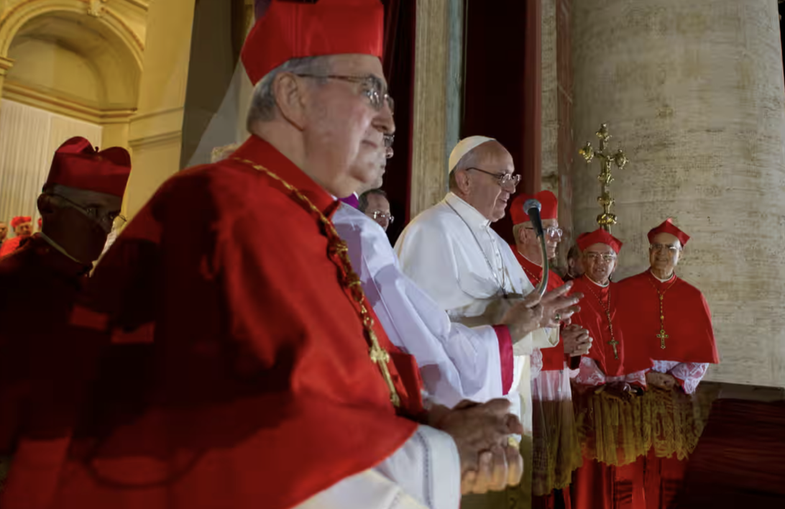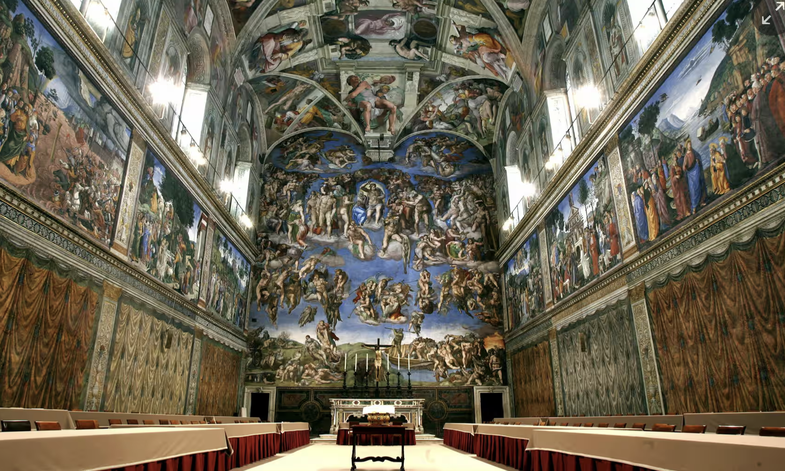
Pope Francis has died at the age of 88. He breathed his last on Easter Monday, April 21, at the age of 88, in his residence at Casa Santa Marta in the Vatican.
But, if you're curious to know how the new Pope will be elected, let us tell you!
The next pope will be chosen by the College of Cardinals, the highest-ranking figures in the Catholic Church appointed by the pontiff, who will head to Rome in the coming days to hold the conclave. (The name comes from the Latin “cum clave,” meaning “with a key,” indicating the closed process of electing the new pope.)
Over 220 cardinals from over 70 countries are participating in the conclave, but only about 120 of them are voting cardinals (those over the age of 80 are excluded). Two-thirds of the voting cardinals were chosen by the late Pope Francis over the past 10 years and largely reflect his vision for a more inclusive church.

After the cardinals gather in Rome, usually 15-20 days after the Pope's death, they meet in the Sistine Chapel to begin their deliberations. After pronouncing the words "extra omnes" - "all outside" - referring to everyone except the voting cardinals and a handful of officials and doctors, the doors are closed.
Cardinals are sworn to complete secrecy and are not allowed any contact with the outside world during the entire election process. Their phones are taken away and no newspapers, television, letters or messages are allowed. The chapel is also checked for listening devices before and during the conclave.
The conclave begins with a solemn mass, after which the discussions and voting begin. Voting takes place every day, morning and afternoon, until a candidate wins a two-thirds majority. After every seven rounds of voting, a day of rest is given for prayer and reflection.
If after 30 votes there is still no final result, then the Pope is elected by a simple majority. The longest papal conclave in recent history was in 1922, when it took cardinals five days to elect a new leader.
Any baptized male can be elected Pope, although a sitting cardinal is usually elected. Each voter receives a ballot with the words “Eligo in summum pontificem” (“elect as supreme Pope”) . They write the name of their preferred candidate, fold the ballot, and drop it into a box.
Voting is secret, but that doesn't mean the process is immune to affairs, intrigue, and lobbying.
After each round of voting, the ballots are burned. Chemicals are added to produce black or white smoke. Black smoke billowing from the chimney indicates that the vote was inconclusive; white smoke announces to the world that a new Pope has been elected.
The winning candidate is asked whether he accepts the election and, if so, what name he wishes to take as Pope. The cardinals swear allegiance to the new Pope, who is escorted to the "Chamber of Tears" to be dressed in a white robe and hood, as well as red slippers. Three sets of robes in different sizes are prepared in advance by Vatican tailors.
The cardinals then go out onto the main balcony of St. Peter's Basilica, in front of which thousands of Catholics and many tourists will have gathered. They say: "Annuntio vobis gaudium magnum: Habemus papam" - "We announce with great joy: We have (elected) a Pope."
Suggested articles:





